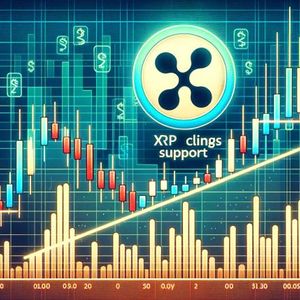Market Pulse
European Union financial watchdogs are preparing to significantly expand their oversight of the crypto-asset sector, signaling a new era of heightened scrutiny for exchanges and service providers. Building upon the foundational Markets in Crypto-Assets (MiCA) regulation, regulatory bodies like the European Securities and Markets Authority (ESMA) and the European Banking Authority (EBA) are poised to introduce more stringent compliance requirements, fundamentally reshaping the operational landscape for digital asset firms across the bloc.
MiCA’s Expanding Reach and Enforcement
The Markets in Crypto-Assets (MiCA) regulation, a landmark legislative package, established a comprehensive framework for crypto assets within the EU. Its phased implementation, with rules for stablecoins and asset-referenced tokens coming into force in mid-2024 and broader provisions for other crypto-assets and service providers by late 2024, set the stage for this intensified regulatory focus. Now, the emphasis shifts from drafting legislation to robust enforcement and granular oversight.
- Broader Scope: MiCA covers a wide array of crypto assets not already regulated by existing financial services legislation, including utility tokens, certain NFTs, and stablecoins.
- Key Authorities: ESMA is tasked with overseeing crypto-asset service providers (CASPs) and providing technical standards, while the EBA focuses on stablecoins and their issuers.
- Consumer Protection: Significant provisions are dedicated to ensuring market integrity, transparency, and consumer protection through clear disclosure requirements and market abuse prevention.
The Rationale Behind Heightened Scrutiny
The move towards expanded oversight is driven by a multi-faceted rationale centered on stability, integrity, and investor safeguarding. Regulators aim to mitigate risks inherent in a rapidly evolving and often volatile market, while also fostering a safer environment for innovation.
Key drivers for this increased regulatory attention include:
- Investor Protection: Shielding retail and institutional investors from scams, fraud, and opaque market practices.
- Financial Stability: Preventing systemic risks that could arise from the unchecked growth of crypto markets, particularly with large-scale stablecoin adoption.
- Market Integrity: Combating market manipulation, insider trading, and other illicit activities to ensure fair and orderly markets.
- Anti-Money Laundering (AML) & Counter-Terrorist Financing (CTF): Strengthening frameworks to prevent the use of crypto assets for illegal purposes.
- Leveling the Playing Field: Bringing crypto assets under a regulatory umbrella similar to traditional financial instruments to ensure competitive fairness and regulatory consistency.
Operational Impacts on Crypto Exchanges and Service Providers
For crypto exchanges and other CASPs operating within the EU, the expanded oversight translates directly into significant operational adjustments and increased compliance burdens. Firms will need to invest heavily in robust internal systems, legal expertise, and operational resilience to meet the new standards.
- Enhanced Licensing & Authorization: Firms must obtain authorization as CASPs under MiCA, which entails strict organizational, technical, and financial requirements.
- Reporting Obligations: Mandatory reporting of transactions, market data, and potential market abuse will become standard.
- Consumer Disclosure: Clear, accurate, and non-misleading information must be provided to clients, including whitepapers and risk warnings.
- Cybersecurity & Operational Resilience: Stronger measures to protect against cyberattacks, system failures, and operational disruptions are expected.
- Governance & Internal Controls: Establishing sound governance arrangements, including effective risk management and internal control mechanisms, will be paramount.
Future Landscape of EU Crypto Regulation
This intensified regulatory approach is not a static endpoint but rather an evolving process. As the crypto market continues to innovate, EU regulators are likely to remain agile, potentially introducing further amendments or new legislative acts to address emerging technologies like Decentralized Finance (DeFi) or new forms of tokenized assets.
The EU’s comprehensive framework is also setting a precedent globally, influencing regulatory discussions and strategies in other major jurisdictions. While the immediate impact may involve increased costs and complexity for businesses, the long-term vision is to foster a mature, legitimate, and safe crypto ecosystem within the European Union.
Conclusion
The EU’s financial watchdogs are clearly signaling a shift towards a more hands-on and rigorous approach to crypto regulation. With MiCA as its backbone, this expanded oversight aims to professionalize the crypto market, offering greater protection for investors and enhancing financial stability. While the journey towards full compliance may present challenges for some market participants, it ultimately paves the way for a more integrated and trusted digital asset economy within one of the world’s largest economic blocs.
Pros (Bullish Points)
- Increased investor protection and market integrity across the EU.
- Greater regulatory clarity fostering institutional adoption and traditional finance integration.
Cons (Bearish Points)
- Higher compliance costs for crypto businesses, potentially leading to market consolidation or reduced innovation for smaller players.
- Potential for a slower pace of innovation in the EU crypto sector compared to less regulated regions.



